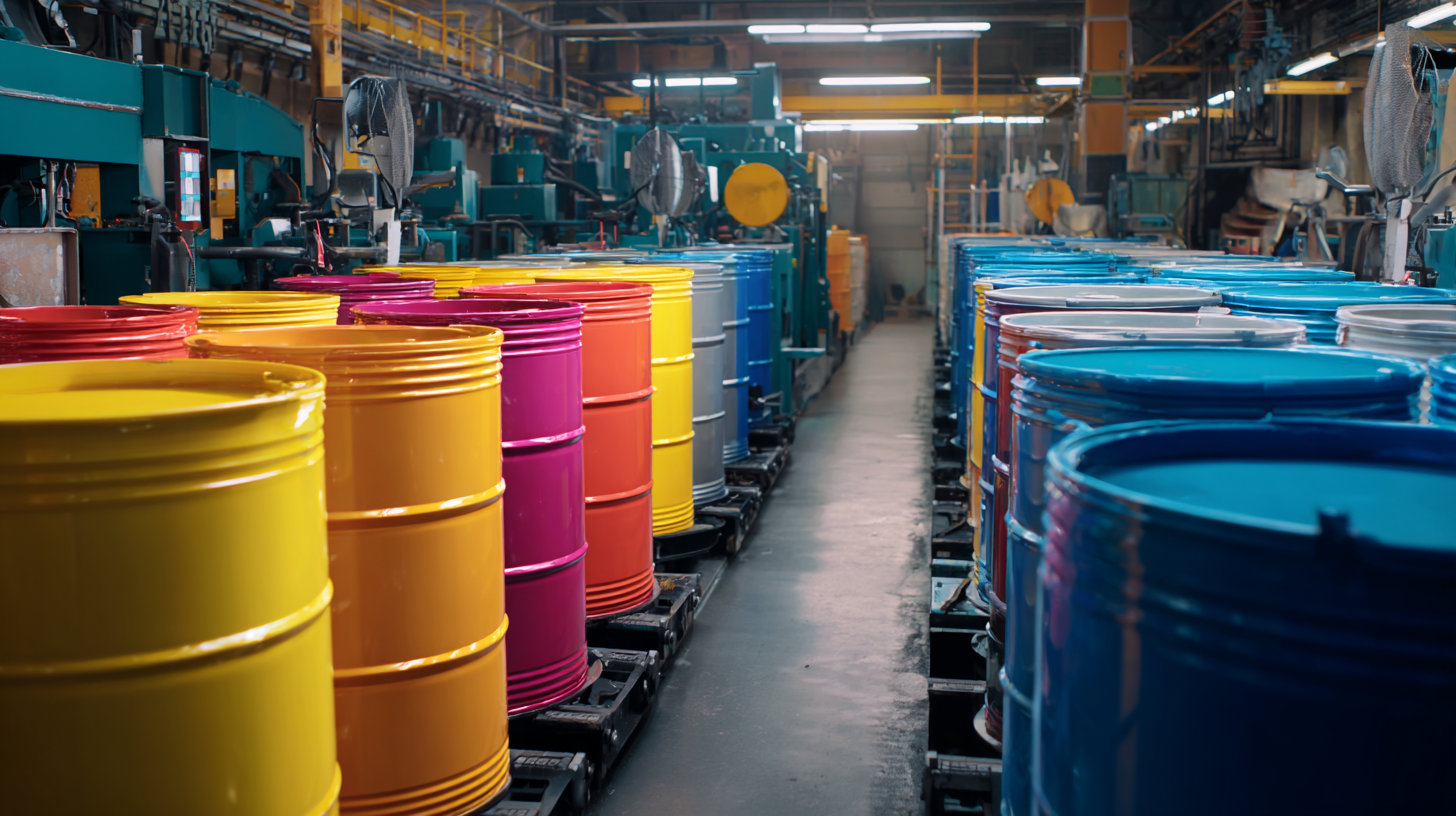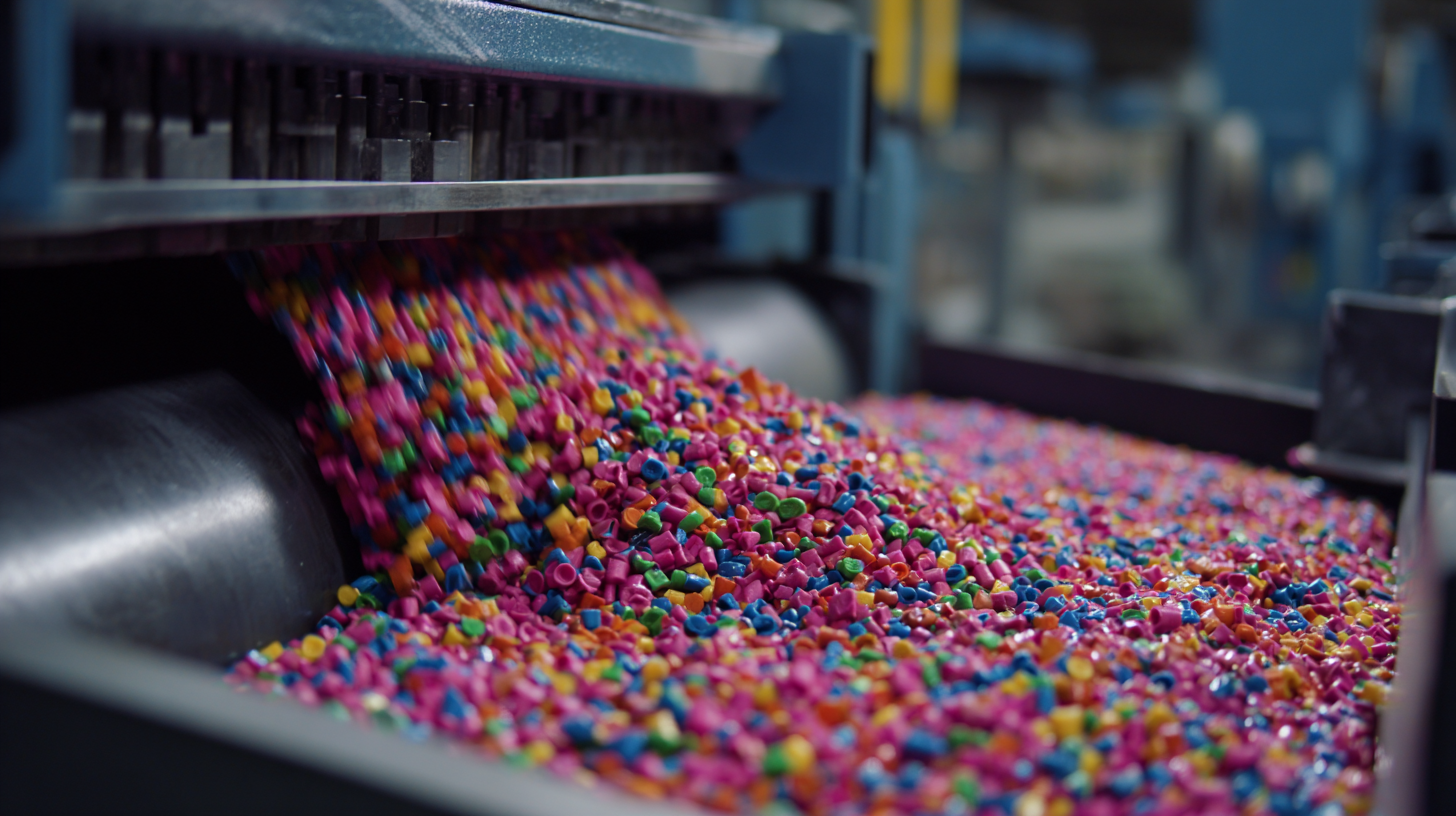- Home
- Masterbatch
- Additive Masterbatch
- Anti-Block Masterbatch
- Anti-Fog Masterbatch
- Anti-Microbial Masterbatch
- Anti-Oxidant Masterbatch
- Anti-Static Masterbatch
- Anti-Termite & Rodent Masterbatch
- Desiccant / Anti-Moisture Masterbatch
- Optical Brightener Masterbatch
- Flame Retardant Masterbatch
- Slip Masterbatch
- Polymer Processing Aid (PPA) Masterbatch
- UV Masterbatches
- VCI Additive Masterbatch
- Filler Masterbatch
- Black Masterbatch
- White Masterbatch
- Color Masterbatch
- Mono Masterbatches
- Special Effect Masterbatches
- EVA Masterbatch
- OXO Biodegradable Masterbatch
- XLPE Masterbatch
- Cable Masterbatch
- Nylon Masterbatch
- TPU Masterbatch
- Additive Masterbatch
- Compound
- Market
- Company
- Blog
- Contact Us
Unlocking Creative Potential: How Color Master Batches Transform Plastic Manufacturing
In the rapidly evolving landscape of plastic manufacturing, the integration of color master batches has emerged as a pivotal innovation that enhances both aesthetic appeal and functional performance of products. According to a report by Allied Market Research, the global market for masterbatch is projected to reach $17.7 billion by 2025, growing at a CAGR of 5.9%. This significant growth underscores the increasing demand for tailored solutions that not only meet strict regulatory standards but also cater to consumer preferences for vibrant and diverse product offerings.

Color master batches, which comprise concentrated pigments and additives, allow manufacturers to optimize color consistency and reduce production waste, ultimately leading to higher efficiency and sustainability. As manufacturers seek to unlock their creative potential and differentiate their products in a competitive marketplace, the adoption of color master batches stands out as a transformative strategy that bridges the gap between innovation and practicality in the plastic sector.
Exploring the Science Behind Color Master Batches in Plastics
The science behind color master batches in plastics plays a crucial role in enhancing the aesthetic and functional properties of plastic products. Color master batches are concentrated mixtures of pigments and additives encapsulated in a carrier resin, allowing for precise colorization during the manufacturing process. This innovation not only enriches the visual appeal of the final products but also ensures consistency and efficiency in production. By enabling manufacturers to achieve vibrant colors without compromising material integrity, these master batches transform the landscape of plastic manufacturing.
Furthermore, the formulation of color master batches is rooted in a deep understanding of polymer science. Different polymers interact uniquely with various pigments, and manufacturers must carefully choose the right combination to optimize performance. This includes considering factors such as lightfastness, heat stability, and compatibility with the base resin. Advances in colorant technology have enabled the creation of environmentally-friendly options, promoting sustainability within the industry. As manufacturers increasingly prioritize both aesthetics and performance, color master batches emerge as indispensable tools for unlocking creative potential in plastic applications.

Innovative Applications of Color Master Batches in Diverse Industries
Color masterbatches are redefining the landscape of plastic manufacturing across various industries by enhancing both aesthetics and functionality. The United States Color Masterbatch Market, valued at approximately USD 468.52 million in 2023, is projected to expand to USD 603.85 million by 2029, illustrating a robust compound annual growth rate (CAGR) of 4.28%. This growth underscores the increasing demand for innovative color solutions in sectors such as automotive, packaging, and consumer goods.

The versatility of color masterbatches extends beyond mere pigmentation; they are essential in improving product durability and processing efficiency. Advances in technology have led to the introduction of specialized masterbatches, such as antimicrobial and flame-retardant types, which cater to specific industry needs. For example, Brazilian startup Gerdau Graphene is leveraging graphene additives to enhance the properties of polyolefin packaging, showcasing the trend towards integrating advanced materials for improved performance.
As manufacturers continue to integrate these innovations, the applications of color master batches are set to expand significantly, driving growth and encouraging investment in the advanced polymer market.
Enhancing Aesthetic Appeal: The Role of Color in Plastic Products
Color plays a pivotal role in the aesthetics of plastic products, influencing consumer perception and market appeal. In today's competitive landscape, the visual impact of a product is often as crucial as its functionality. The introduction of color master batches has revolutionized plastic manufacturing by allowing precise and vibrant coloring of materials. This innovation not only enhances the aesthetic attributes of plastic but also enables manufacturers to create distinct branding opportunities.
By incorporating color master batches, producers achieve consistent coloration that meets consumer desires while adhering to industry standards. The variety of shades and effects made possible by these master batches allows for creative experimentation and customization. Whether it's producing eye-catching packaging or designing durable consumer goods, the strategic use of color directly contributes to a product's success in the market. As such, the role of color in plastic products transcends mere decoration, becoming an essential element of design and functionality that resonates with consumers.
Unlocking Creative Potential: Color Distribution in Plastic Manufacturing
This chart demonstrates the percentage of various colors utilized in plastic manufacturing processes, highlighting the significance of color master batches in enhancing the aesthetic appeal of plastic products.
Sustainable Practices in Color Master Batch Production
As the emphasis on sustainability in manufacturing grows, color masterbatch production is evolving to meet these demands. Innovative approaches in the production of additive masterbatches are crucial to enhancing the environmental footprint of plastic materials. For instance, the introduction of solution-dyeing technology represents a significant advancement, allowing for more efficient dyeing processes that minimize water and energy usage. This method not only improves color quality but also aligns with sustainable practices by reducing waste.
Moreover, industry leaders are actively engaging in alliances dedicated to combating plastic waste, showing a commitment to responsible production. By developing high-performance additive solutions that use less harmful substances and promote recycling, manufacturers can significantly contribute to a more sustainable plastic industry. Continued innovation in this field is essential for unlocking the creative potential of color masterbatches while ensuring eco-friendly practices are at the forefront of plastic manufacturing.
Unlocking Creative Potential: How Color Master Batches Transform Plastic Manufacturing - Sustainable Practices in Color Master Batch Production
| Application Area | Type of Color Master Batch | Sustainability Feature | Benefits |
|---|---|---|---|
| Packaging | Recycled PET Master Batch | Made from post-consumer waste | Reduced environmental impact |
| Consumer Goods | Bio-based Master Batch | Derived from renewable resources | Lower carbon footprint |
| Automotive | Heat-resistant Master Batch | Energy-efficient production | Improved durability of parts |
| Textiles | Non-toxic Master Batch | Free from harmful chemicals | Safer for consumers and the environment |
Future Trends: Advancements in Color Technology for Plastics
The rapid evolution of color technology in plastic manufacturing is paving the way for more vibrant, sustainable, and efficient production processes. Recent industry reports indicate that the global market for color masterbatches is expected to reach $15 billion by 2026, growing at a CAGR of 5.5% from 2021 to 2026. This growth is primarily driven by advancements in pigment formulations and application techniques, enabling manufacturers to achieve enhanced color consistency and stability under various environmental conditions.
One notable trend is the increasing incorporation of biodegradable and eco-friendly colorants in masterbatch formulations. As sustainability becomes a priority across industries, companies are seeking solutions that minimize environmental impact without compromising on visual appeal. For instance, studies reveal that the use of organic pigments can reduce carbon footprints by up to 30% compared to traditional synthetic options. Additionally, innovations in digital printing technology are facilitating more precise color matching and customization, allowing brands to create unique products tailored to consumer preferences. These advancements signify a transformative shift toward smarter and greener practices in plastic manufacturing.
Related Posts
-

Unlocking the Benefits of Anti Block Masterbatch: Revolutionizing Plastics with Enhanced Performance
-

Unlocking the Potential of Filler Masterbatch: Innovations in Polymer Manufacturing
-

Revolutionizing Repair: Understanding the Science Behind Plastic Fillers and Their Environmental Impact
-

Discover How Slip Masterbatch Revolutionizes Plastic Processing Efficiency
